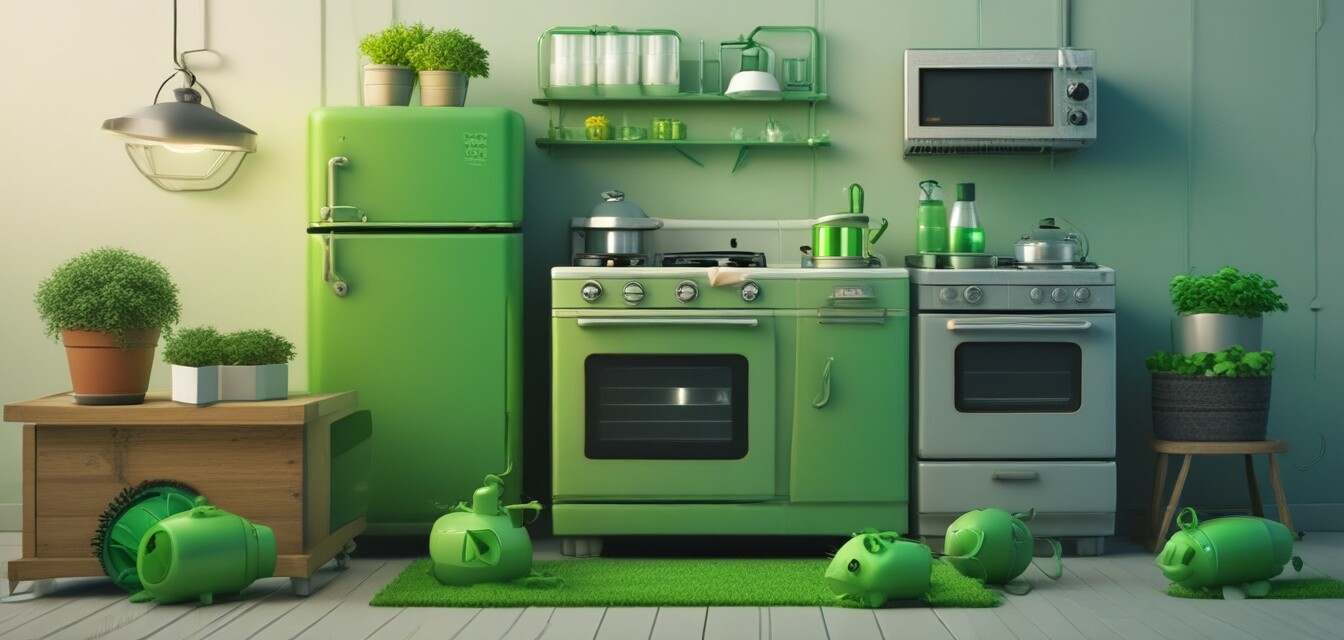
Consumer awareness in energy efficiency: Trends for 2025
- Growing consumer awareness is driving demand for energy-efficient appliances.
- Manufacturers are increasingly focusing on sustainability and innovation.
- Regulatory changes are impacting the production and marketing of energy-efficient products.
- Technology plays a pivotal role in enhancing energy performance and efficiency.
As we approach 2025, consumer awareness regarding energy efficiency is becoming a vital factor influencing the market for home appliances. Consumers are increasingly prioritizing energy-efficient products that not only cut down on electricity bills but also align with their environmental commitments. This article delves into how this surge in awareness affects manufacturers and the diversity of product offerings available.
Understanding Consumer Awareness
In a world facing climate challenges, consumers are becoming more informed about the impact of their purchasing choices. The shift towards energy-efficient appliances is rooted in:
- Rising energy costs
- Concerns about climate change
- Government incentives for energy-efficient products
- Availability of information through online platforms
The Role of Energy Labels
Energy labels provide essential information to consumers, helping them identify energy-efficient products. For instance, the Energy Star label signifies that a product meets stringent energy efficiency guidelines set by the U.S. Environmental Protection Agency.
Consumer Expectations
Today's consumers expect more from appliances. They want:
- High energy efficiency ratings
- Smart technology integration
- Modern designs that fit with home aesthetics
Trends Influencing Manufacturing in 2025
As consumer awareness rises, manufacturers are evolving. Here are some key trends shaping the industry:
| Trend | Description |
|---|---|
| Smart Technology | Integration of smart technology in home appliances for better energy management. |
| Sustainable Materials | Use of recycled and sustainable materials in appliance production. |
| Design Innovation | Focus on aesthetics alongside energy efficiency, making appliances more appealing. |
| Consumer Education | Increased efforts in educating consumers about energy efficiency and product benefits. |
Innovations in Energy-Efficient Appliances
Innovation is at the heart of energy efficiency. Here are some notable advancements:
- Advanced insulation techniques in refrigerators
- Heat pump technology in HVAC systems
- Smart dishwashers with sensor technology to minimize water and electricity use
Regulatory Influences in 2025
With increased consumer awareness, regulations designed to promote energy efficiency are also evolving. Some government measures include:
- Minimum Energy Performance Standards (MEPS): Ensuring all appliances meet a specified energy efficiency level.
- Incentives and Rebates: Financial incentives for consumers purchasing energy-efficient products.
- Close Monitoring: Regulatory bodies are monitoring manufacturers to prevent false advertising regarding energy efficiency claims.
Maximizing Energy Savings at Home
As appliances evolve, so must consumer habits. Here are tips to maximize savings with energy-efficient products:
Beginner's Tips for Energy Efficiency
- Use appliances during off-peak hours when energy rates are lower.
- Regularly maintain your appliances to ensure optimal performance.
- Take advantage of smart features that optimize energy use based on your habits.
The Future of Energy Efficiency
As we move toward 2025, it's evident that consumer awareness will continue to shape the energy efficiency landscape. Manufacturers will be challenged to innovate continually while providing transparency regarding their products’ energy performance.
What Lies Ahead
Looking forward, here are projected trends that may evolve:
- Increased reliance on renewable energy sources for powering appliances.
- Introduction of more energy-efficient regulations globally.
- Fabrication of smarter appliances capable of self-optimizing energy consumption.
Pros
- Reduced energy costs for households.
- Environmental benefits from reduced carbon footprints.
- Increased awareness leads to informed purchasing decisions.
Cons
- Higher initial investment for energy-efficient appliances.
- Not all products are created equal; some may not meet expectations.
- Consumer confusion about the varying standards and labels.
Conclusion
Consumer awareness regarding energy efficiency is on the rise, influencing manufacturers and product offerings as we approach 2025. As awareness grows, the future promises a more sustainable and intelligent approach to home appliances. Keeping abreast of these trends will empower consumers to make informed choices, benefiting both their wallets and the planet.
For more insights into the latest trends in the energy-efficient appliance market, check out our News and Trends section.
